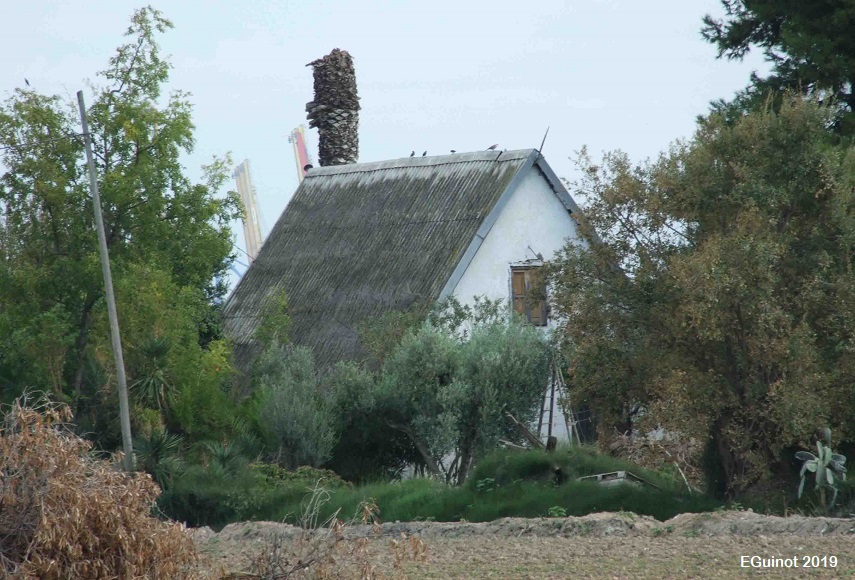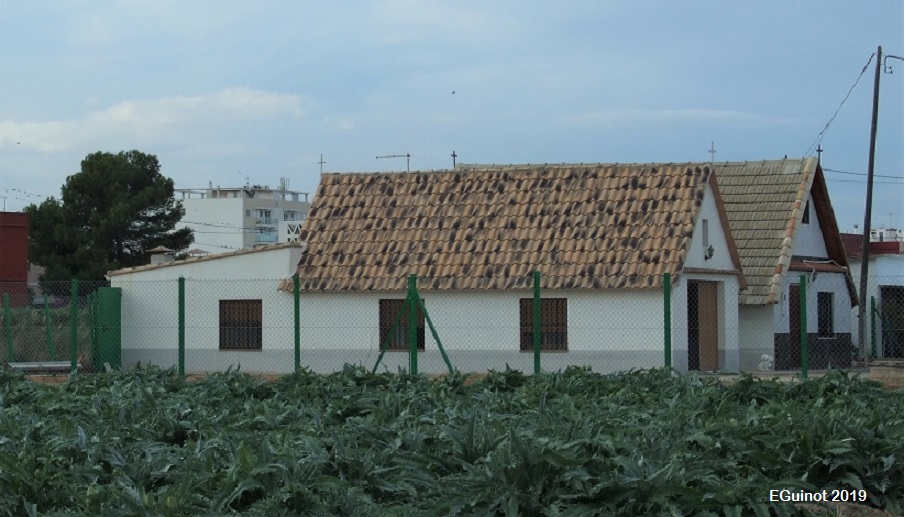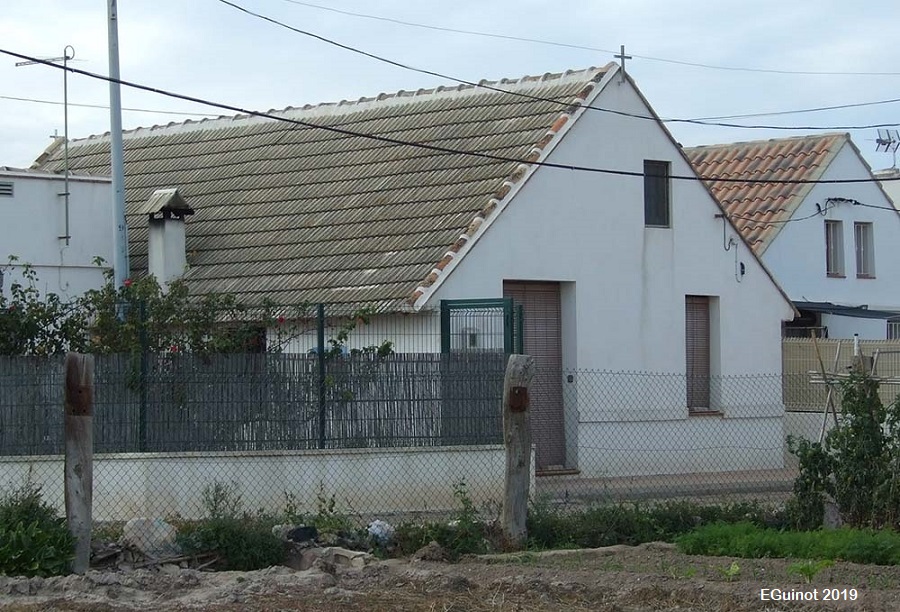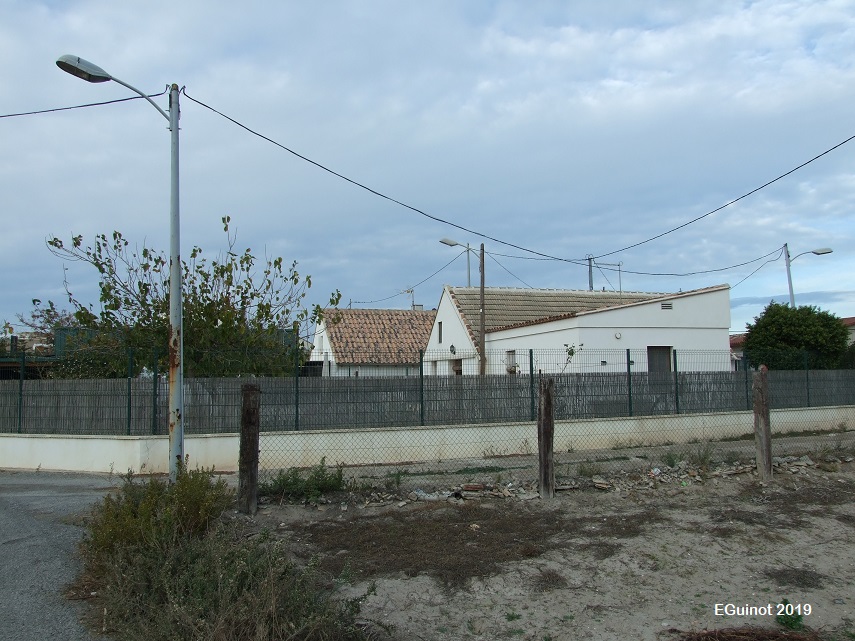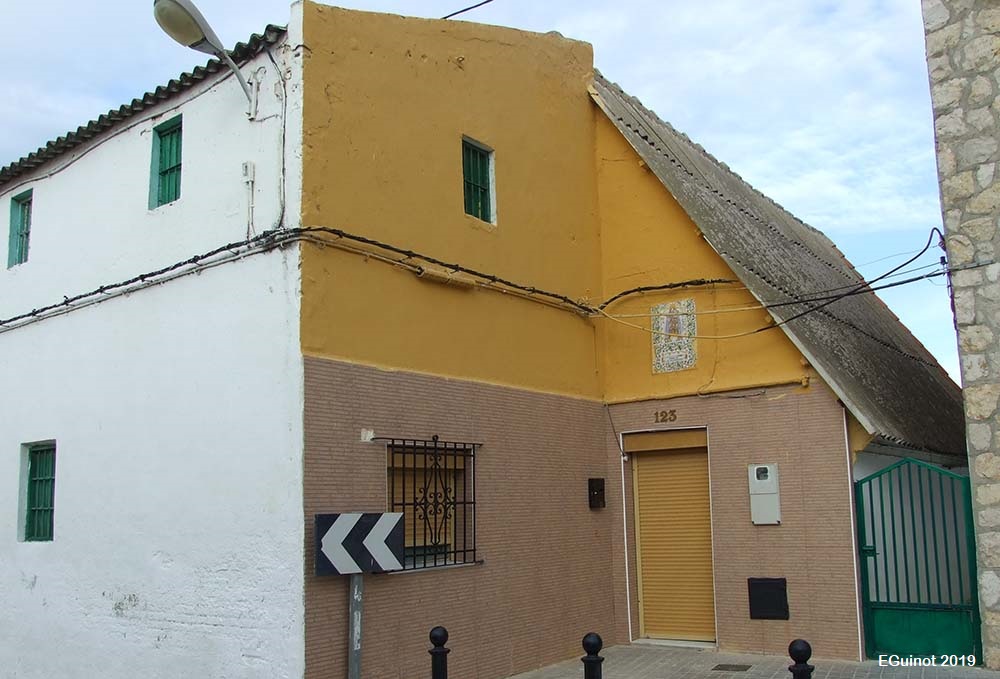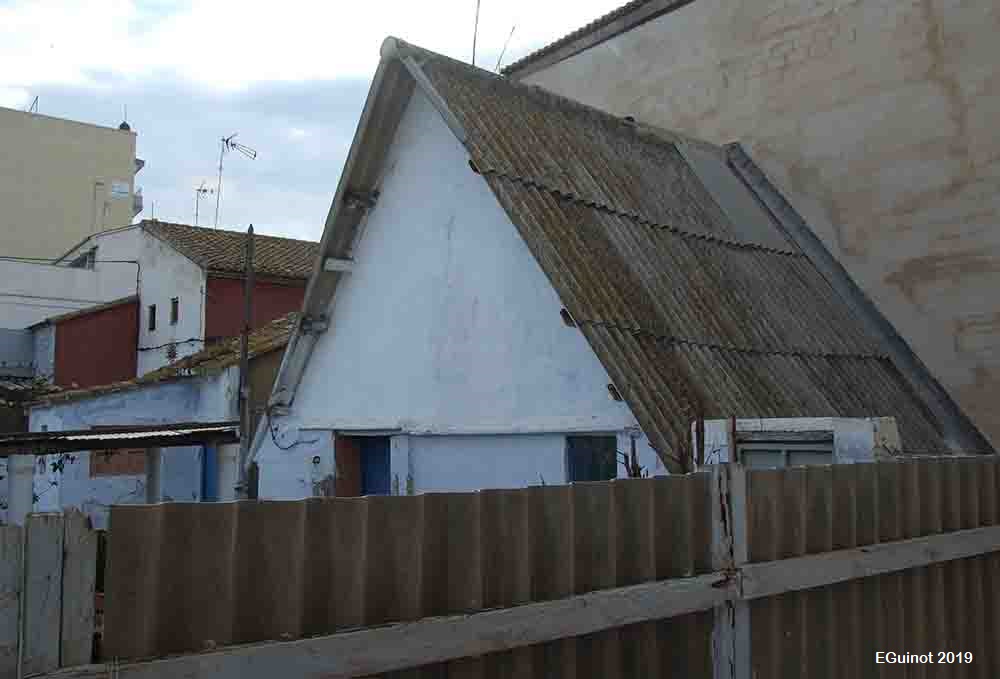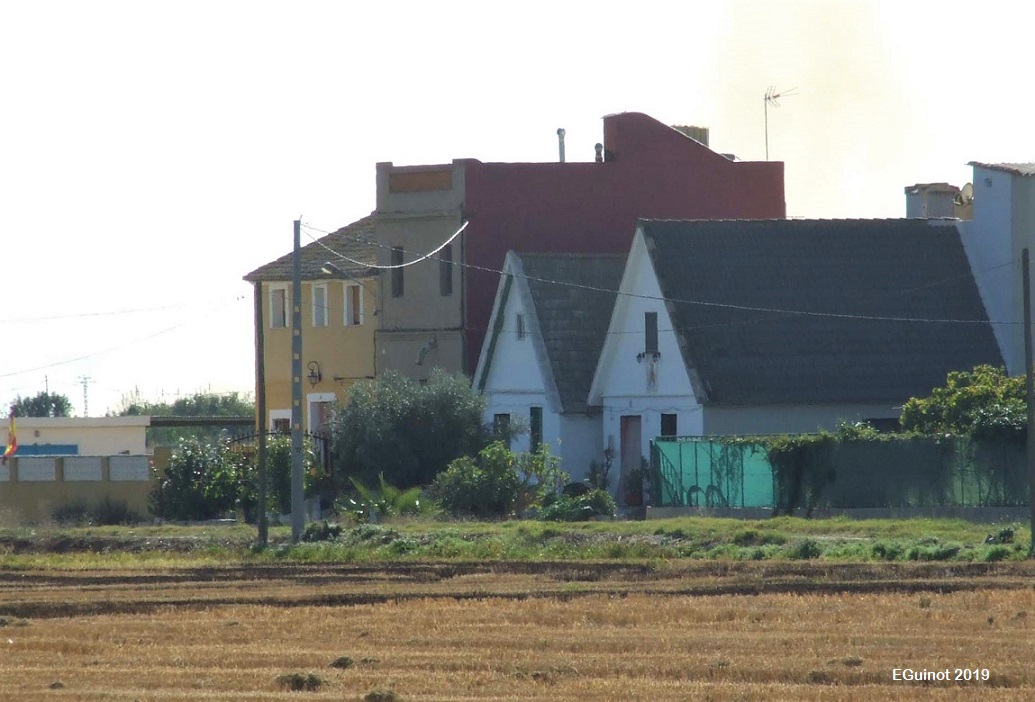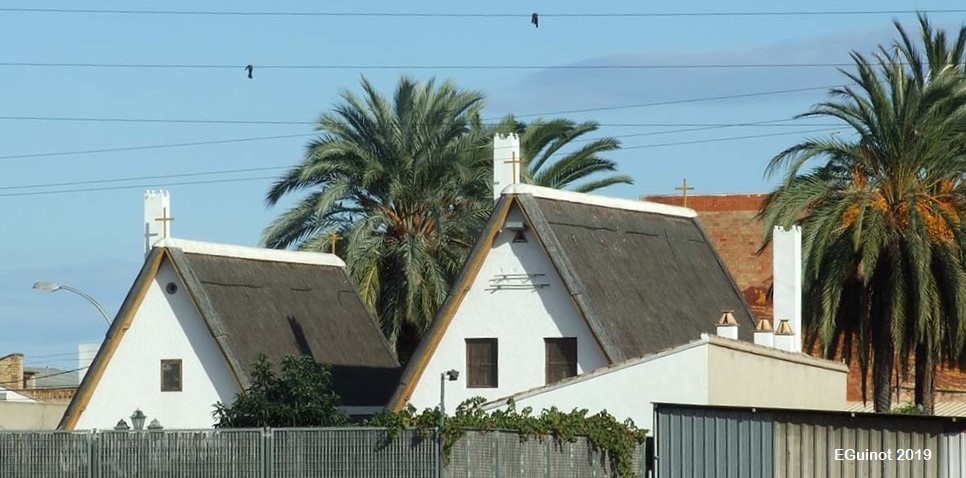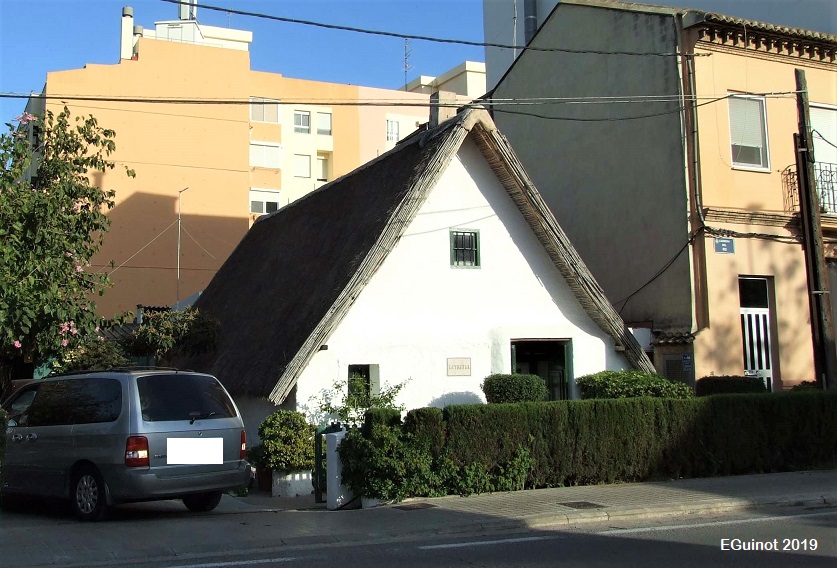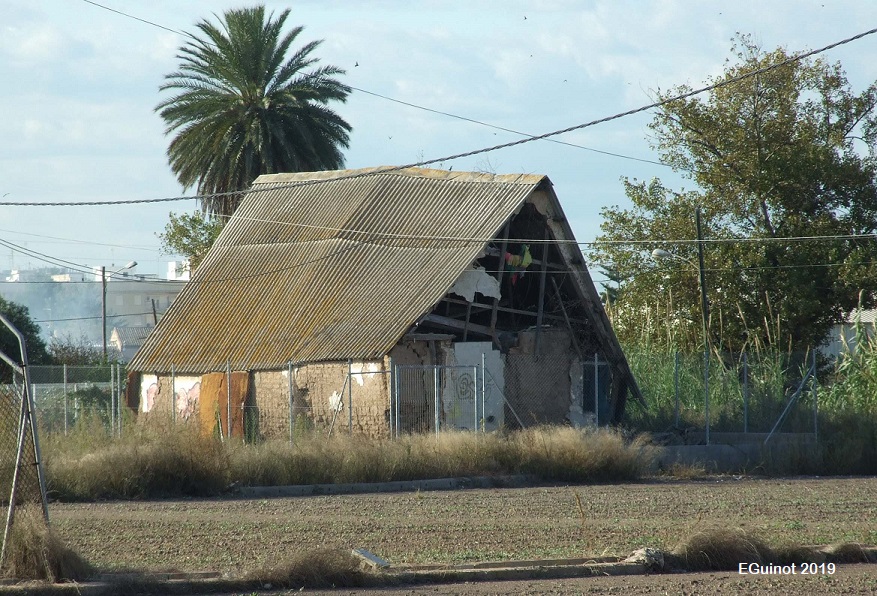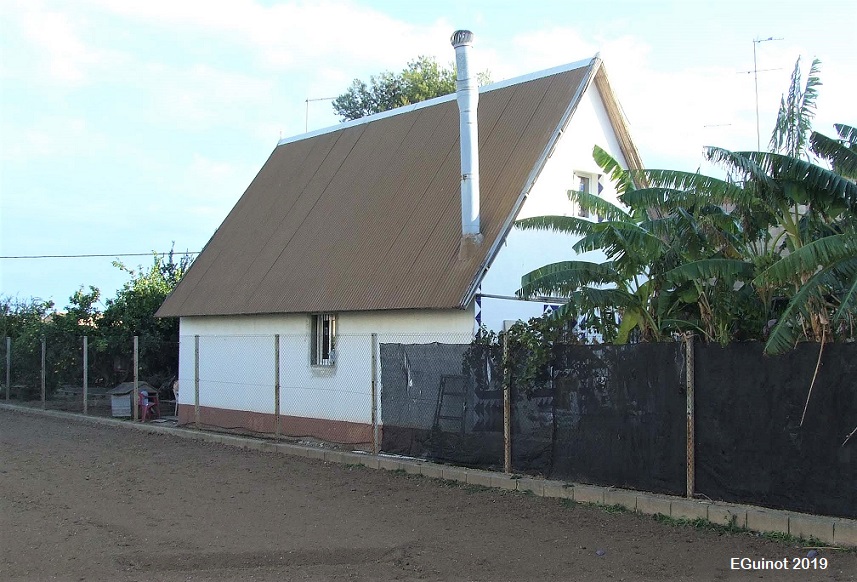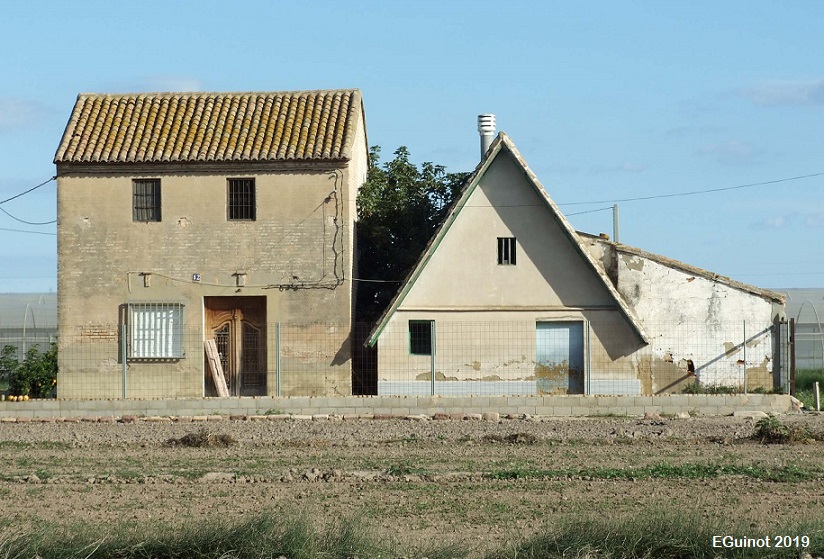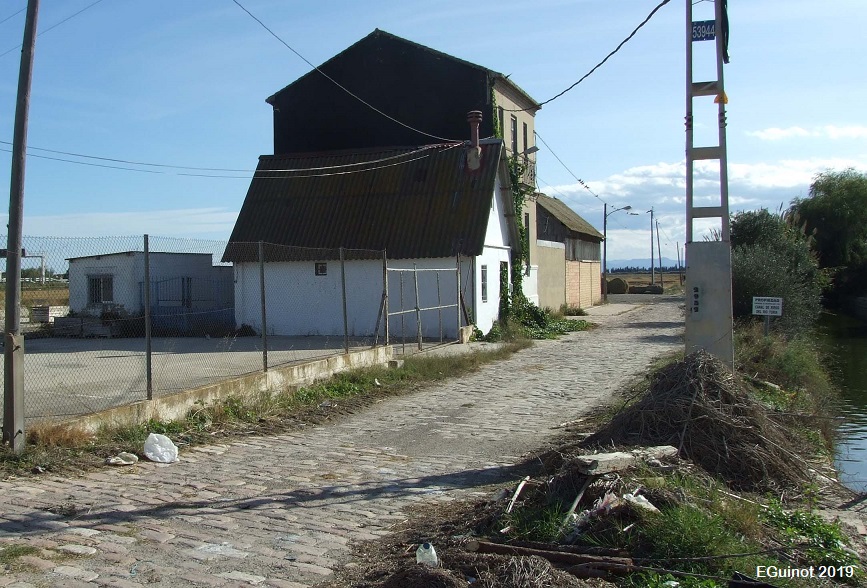The huts have been a significant part of the historical landscape of the Francs, marjals and extremals area within the municipality of the city of Valencia. This agricultural area, like the area closest to the old town, saw its population increase significantly from the 18th century onwards, especially in the 19th and 20th centuries, as the margins of the Albufera and the wetlands between Russafa and Pinedo dried out.
Moreover, it was a space that traditionally did not accumulate its population in centres of population, largely due to the predominant type of wetlands, and the dispersion of residential areas characterised it until the first half of the 20th century with the growth of the centres of Castellar, Oliveral and Pinedo.
Both the farmhouse and the hut have been used as living quarters, although their presence is basically economic. Building a hut was always cheaper than building a house, so the presence and distribution of the former is related to the economic possibilities of the peasant families who settled on their fields.
According to some maps and historical documentation on the ownership of land in l’Horta of Valencia, the period of greatest proliferation of huts in this periurban area of the city of Valencia was the 19th century and first half of the 20th century, probably with a maximum number of huts in the first third of this last century and with a proportion that could be approximately half and half.
Nowadays, everyone knows about the almost general disappearance of the huts from the Valencia orchard and once again, it has to do with this economic variable. Since the 1950s and 1960s, huts have gradually been substituted for building sites with better living conditions and probably better social prestige.
The outcome is that there are only a few dozen left in the entire Horta of Valencia, although the territory of La Punta, Font d’en Corts, Castellar and Oliveral is one of the areas that still has the greatest number of them. However, it should also be pointed out that in the vast majority of cases, they are not in their traditional constructive state but have been subject to remodelling, especially in terms of the reed roof.


